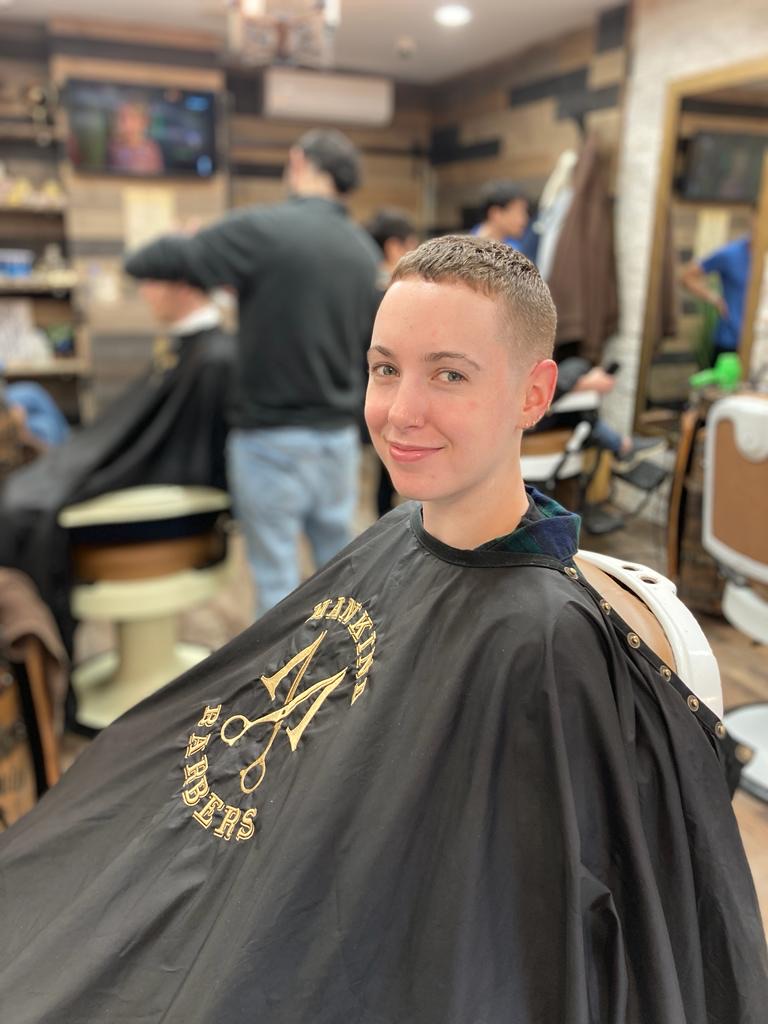Frequently Asked Questions
For creating a low fade, barbers typically utilize shorter clipper guard lengths at the nape and around the ears, often starting with a #1 or #2 guard to achieve that close-cropped appearance while gradually blending into longer lengths on top; commonly using guards like #3 or #4 for seamless transitions. This technique emphasizes subtlety in the gradient, allowing for an elegant juxtaposition between short sides and slightly longer hair on top. Conversely, when executing a high fade, professionals generally opt for medium to long clipper guard lengths higher up on the head; beginning with a #2 to create initial length before transitioning into guards such as #4 or even higher (#5) towards the crown area. The approach highlights more distinct separation between sections of hair and showcases volume atop contrasted against closely faded sides. Overall, understanding these specific guard settings is crucial in mastering both styles effectively within barbering artistry.
To achieve seamless blending between different hair lengths in a skin fade haircut, the barber must employ advanced fading techniques such as clipper over comb and scissor-over-comb methods, ensuring precision throughout the transition from longer to shorter lengths. Utilizing guard sizes strategically allows for gradual changes that create a smooth gradient effect on the sides and back while maintaining balance with the top section. The use of texturizing shears can further enhance this blend by softening harsh lines and allowing for natural movement within varying lengths. Additionally, employing proper head mapping during consultation identifies growth patterns and desired styles that impact how each length interacts visually. Regularly checking angles in good lighting ensures uniformity across all sections, promoting an effortlessly polished appearance typical of high-quality fades. Ultimately, attention to detail combined with consistent technique greatly contributes to achieving optimal results in blending disparate hair lengths effectively.
To prevent clipper overcombing while fading around the crown area, a barber should employ techniques such as using a guard system with varying lengths to gradually blend the hair without creating harsh lines. Utilizing a flicking motion at the crown helps in achieving seamless transitions and avoiding blunt cuts that can lead to an unbalanced fade. Implementing comb-over blending techniques allows for precise control over the tapering process, ensuring even distribution of hair length throughout. Additionally, incorporating scissor-over-comb methods may provide more finesse when dealing with textured or curly hair types near the crown, preserving natural movement while maintaining clean edges. Regularly inspecting sections during cutting promotes awareness of density changes and facilitates corrections before they escalate into noticeable flaws within the overall haircut design.
Face shape and hair texture significantly influence the selection of fade styles for clients, as these factors determine how well a specific cut complements an individual’s overall appearance. For instance, individuals with oval face shapes often benefit from mid to low fades that enhance their balanced proportions, while those with square faces may opt for high fades paired with textured tops to soften angular features. Additionally, coarse or curly hair textures can lead stylists toward tapered fades that reduce bulk while maintaining volume on top, whereas fine or straight hair might require more gradual blends to create depth without sacrificing fullness. Understanding the interplay between facial symmetry and hair characteristics allows barbers to tailor fade techniques—such as skin fades, burst fades, or shadow fades—to achieve harmonious aesthetics and elevate each client’s unique style profile.
Clients seeking to preserve their faded hairstyles longer should be advised to adopt a comprehensive hair care regimen that emphasizes color retention and hydration. Regular use of sulfate-free shampoos and conditioners specifically formulated for colored hair can help maintain vibrancy while minimizing further fading. Incorporating leave-in conditioners or deep conditioning masks enriched with natural oils, such as argan or coconut oil, provides essential moisture that combats dryness often associated with color-treated locks. Additionally, clients should limit exposure to direct sunlight by wearing hats or using UV protectant sprays designed for hair, as prolonged sun exposure can degrade pigments. Furthermore, scheduling regular touch-ups at the salon ensures any regrowth is seamlessly blended into the existing style while utilizing gloss treatments enhances shine and depth of color without over-processing the strands. Lastly, reducing heat styling frequency and employing thermal protectants when necessary will safeguard against damage caused by hot tools; this holistic approach ultimately contributes to longer-lasting hues in their cherished hairstyles.

